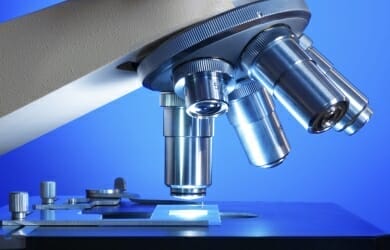
India is in a grip of fear as the swine flu death toll touches 2,000 and over 33,000 people across the country test positive for the infection.
Even as medical scientists struggle to come up with a vaccine to prevent the further spread of the epidemic, homoeopaths claim to have an effective medicine to prevent the spread of the H1NI virus causing the influenza. “We were the first ones to come up with a preventive medicine for H1N1” claims Jayesh V Sanghvi, Vice-Chairman of the Global Homeopathy Foundation (GHF), an association of homeopathy practitioners in the country. According to him, homoeopathy has potential to even cure chronic diseases such as kidney failure. “Recently, we were referred a patient, whose creatinine level was rising at an alarming pace every other day and the patient was not responding to haemodialysis. But, after we started homeopathy treatment, his kidney resumed normal function in less than a month,” he explains.
For those who rubbish this system of medicine as not being scientifically proven, he explains why misgivings about homoeopathy may not be valid. First, homoeopathy medicine works on the human body unlike allopathy medicine, which acts on the disease causing organism. “For instance, in allopathy, when a patient suffers from pneumonia he is given specific doses of the antibiotic, which can kill the organism. In contrast, homoeopathy does not kill the organism but strengthens the body’s immune system to fight the disease naturally,” he explains.
Also, there is practically no side-effect with homoeopathy, he claims. “But, allopathy medicines which are chemical compounds can also kill few good cells, in the process of destroying the organism causing the infection and thereby weaken the immune system,” says Sanghvi. The other key distinguishing feature of homoeopathy is that it is a personalised treatment regimen, unlike allopathy which is largely standardised.
“Hence, it is difficult to have common medicine for specific ailments. Consider pneumonia for instance; we have about 100 medicines and hence we analyse the patient’s nature, emotions, likes and dislikes before we recommend any drug,” he elaborates. The personalised feature of this treatment system makes it both an art and science.
“A report by the World Health Organisation, a couple of years back, quoted homoeopathy as the world’s second largest treatment system, next only to allopathy. Yet, negative perception about the effectiveness of homoeopathy prevails. We are trying our best to allay this,” says Sanghvi.
In fact, at the upcoming Global Homeopathy Summit in Mumbai (April 11-12), a first of its kind, researchers from across the globe will present scientific papers establishing the efficacy of homeopathy treatment regimens.
“Homoeopathy has survived the tug of war with modern medicine thanks to the support given by patients who have benefitted from this. But the time has come for us to integrate the two systems of medicines — allopathy and homeopathy — in the interest of the patients at large,” he hopes.
He cites instances where patients suffering from advanced stages of cancer were able to withstand chemotherapy and radiation better when they took homoeotherapy medication alongside allopathy
http://www.thehindubusinessline.com/features/pulse/homoeopathy-looks-to-dispel-myths-through-scientific-research/article7065613.ece

Important!